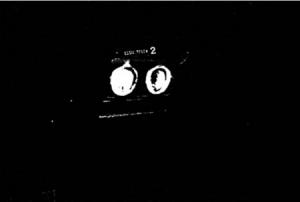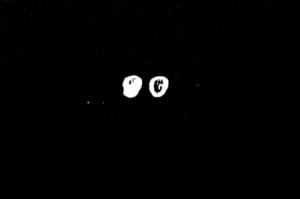Terms of reference
Study of PAPI Frost Tests
(Final)
Transport Canada – Civil Aviation
Aerodrome Safety
Technical Evaluation Engineering (AARME)
Aerodrome Electrical Systems
- 1.0 Objective
- 2.0 Background
- 3.0 General
- 4.0 Technical requirements / Scope of work
- 5.0 Codes, standards, and references
- 6.0 Special requirements
- 7.0 Commencement and completion dates
- 8.0 Modification, addition to, or reduction of work
- 9.0 Fees and disbursements
1.0 Objective
-
1.1 The objective of this study in relation to frost and the Precision Approach Path Indicator (PAPI) is in parts:
Phase 2:
Part 1 For purpose of standards development, to test 4 PAPI designs to determine the minimum time period for frost removal from moment of energization of the units. The question to be answered is, what is the minimum time required for the PAPI light units to eliminate its frost cover.
Part 2 To determine the brightness level (current level) setting required to prevent the accumulation of frost when the PAPI units are operated on a continuous basis.
Phase 3:
The results of the phase 2 study and discussions with experts in the field of meteorology and examination of lab facilities to duplicate such things as snow, sleet, ice, and wind may result in initiating further investigation over a series of operational variables at a later date, the specifics of which will be detailed later.
2.0 Background
The occurrence of frost on the front cover glass of Siemens' PAPI light was reported by Quebec Region of Transport Canada. Testing subsequently took place at Blainville to evaluate the time period for removal of this frost once the light unit has been turned on.
The PAPI light units are to be tested as supplied. They may have heaters or be without cover glasses.
The PAPI light units are of the 5 step series circuit type. As a general practice, this form of design involves operation at 5 brightness levels, related to the RMS current value to the lamps.
| Brightness Level | Intensity (percent) | Current (rms amperes) | Allowable Range |
|---|---|---|---|
| 5 | 100 | 6.6 | 6.40 – 6.70 |
| 4 | 25 | 5.2 | 5.04 – 5.36 |
| 3 | 5 | 4.1 | 3.98 – 4.22 |
| 2 | 1 | 3.4 | 3.30 – 3.50 |
| 1 | 0.2 | 2.8 | 2.72 – 2.88 |
Some PAPI may be supplied through a 3 step series circuit. The levels are as follows:
| Step | Nominal Output (amperes rms) | Intensity (percent) | Allowable Range |
|---|---|---|---|
| 3 | 6.6 | 100 | 6.40 – 6.70 |
| 2 | 5.5 | 30 | 5.33 – 5.67 |
| 1 | 4.8 | 10 | 4.66 – 4.94 |
The PAPI, for 5 step regulators are normally installed so that they operate at only the steps 3,4, and 5. The current level of 4.1 amperes is most critical, as this the level at which the PAPI would be first turned on by pilots. For the case of PAPI for 3 step regulators there is a higher current level for the first step which is 4.8 amperes. We can assume that the 5 step (5.2 amperes) and the 3 step (5.5 amperes) should have the same effect. However, to determine the time period to defrost, we would have four separate tests at 6.6, 5.2, 4.8 and 4.1 amperes.
It is of importance during this testing that the PAPI units have an equal thickness of frost. Thus the need for a precise method of measurement.
It is to be noted that during the time at which frost is present on the PAPI, the resulting white color indicates a flydown signal. If the presence of this signal is considered unacceptable for any period of time, then the alternative of continuous operation will have to be considered. Part 2 of the objective is to determine at what brightness level or current value the light unit can be maintained warm enough to prevent frost from forming in the first place. Since this would involve a continuous operation of the PAPI, or at least for some length period, it would be of interest to know at what would be the lowest level at which frost is prevented. Thus, the test should look at the lower 5 step regulator settings of 2.8, 3.4 and 4.1 amperes. It is assumed that if the unit is maintained free of frost at or less than 4.1 amperes, then this should be sufficient for the case of the lower step of 4.8 amperes of the 3 step regulator. However, if the PAPI cannot maintain itself free of frost at a lower value, it would be necessary to check the higher levels of 4.8, 5.2 and 6.6 amperes.
The second part of the testing requires a possible 6 sets of tests to address all the indicated current levels. However, once result of prevention of frost is reached for a current level for a particular PAPI design, then it is not necessary to continue testing at the higher levels. It is entirely possible that one specific level can be sufficient for all units and this would then become the standard.
Since the Contractor may not have 3 step or 5 step regulators, the test can be performed with a current feed which is at the required RMS value.
Arrangements will be made by the Client for provision of the PAPI units to the Consultant.
3.0 General
- 3.1 “Client” means the Department of Transportation represented by the Director, Aerodrome Safety, Civil Aviation, Transport Canada, Place de Ville – Tower C, Ottawa, Ontario, K1A 0N8.
- 3.2 The project will be carried out under the direction of the Mr. A. Mazur, Chief, Technical Evaluation Engineering (613) 990-1424. The designated project manager for this project and will be Mr. E. Alf, Navaids Electrical Systems Engineer (613) 998-2999 who will manage it on a day-to-day basis.
4.0 Technical requirements / Scope of work
- 4.1 Arrange for a preliminary Consultant/Client meeting to discuss the scope of work.
- 4.2 Use the Canada Motor Vehicle Safety Standard, No. 103, "Windshield Defrosting and Defogging", 24 January 1995, for application of frost. Use this standard and the dimensions of the Siemens cover glass, to find the thickness of frost that would be applied at a temperature of minus 20 degrees Celsius. This thickness will bb the thickness of frost to be applied to all PAPI units.
- 4.3 Proceedure for Part 1, for the following 4 specific temperatures: -30, -10, -5, and 0 degrees Celsius
- Soak the PAPI units in a cold chamber to the specified temperature.
- Provide visual isolation barriers to ensure that there is no signal interference between the units during the test
- Arrange the units so that their signal is projected onto a white diffuse screen at a distance of at least 3 m.
- Apply an equal layers (thickness) of frost on the front of each PAPI light unit.
- Using video recording, determine the time to defrost after turning the units on at brightness level 5 at 6.6 amperes. The time shall be measured from the moment of lamp energization to the moment when the projected signal has returned to a distinctive red/white display.
- In addition to the above temperatures, perform the above test at -20 degrees Celsuis for the siemens PAPI unit without cover glass and with normal cover glass.
- 4.4 Procedure for Part 2, for the following 4 specific temperatures: -30, -10, -5, and 0 degrees Celsius
- (a) Place the light units in a cold chamber, at the select temperature.
- (b) Place a thermocouple device on one of the lenses or on the middle of the cover glass to monitor the temperature during the test.
- (c) Energize the light units at 2.8 amperes and allow the units to operate until they are thermally stabilized.
- (d) Attempt to apply frost to the front of each light unit, determining whether the warmth of the units are preventing frost accumulation.
- (e) If the unit is not maintained free of frost at 2.8 amperes, then repeat this test at each supply current level of 3.4, 4.1, 4.8, 5.2 and 6.6 amperes ,stopping at the supply level at which frost free operation is reached.
- (f) Ensure that the thermal stability of the unit is achieved between each current change. The temperature of the lens/cover-glass shall be monitored and recorded continuously throughout the testing.
- (g) In addition to the above temperatures, perform the above test at -20 degrees Celsuis for the siemens PAPI unit without cover glass and with normal cover glass.
- 4.5 Deliverable: Prepare a report of the work done and submit to the Client maximum two weeks after the completion of the test for review and comment. One week after reception of Client comments, finalize the report and submit as the deliverable of this project. Submit the final version of the report to the Client, both as a hard copy printout and an electronic file. The report shall fully detail the testing and make conclusion as to achievement of the objectives.
- 4.6 The text of the report shall be prepared using a word processing programs whose files are retrievable with Microsoft Word, version 7.0. The diagram shall be prepared in a format retrievable by CorelDraw, version 7.0.
5.0 Codes, standards, and references
- 5.1 Work in accordance with Department of Transport's policies, standards and guidelines. For visual aids standards, the Contractor will be informed by the Client as to the source of reference.
6.0 Special requirements
- 6.1 Intellectual Property. All ownership and intellectual property rights for the deliverables (i.e. the technical circular) of this contract shall reside with Transport Canada.
7.0 Commencement and completion dates
- 7.1 The work of this project will commence immediately upon award of contract.
- 7.2 The project is to be completed not later than 30 December 1997.
8.0 Modification, addition to, or reduction of work
- 8.1 If modification, additional to or reduction of the scope of work is required the Client shall notify the Contractor in writing.
9.0 Fees and disbursements
- 9.1 The fee for Professional Services, Associated Costs (long distance calls, telex, fax, courier, reproduction costs, etc.) shall be an all-inclusive fixed lump sum.
- 9.2 No fee payment will be made by the Department of Transport to remedy errors or omissions for which the Contractor is responsible, and which the Contractor shall remedy and correct as appropriate.
- 9.3 Invoices, supported by time sheets, receipts, and vouchers, shall be submitted in duplicate and itemized to permit proper audit.
- 9.4 Invoices, shall be submitted at the 50 percent and 100 percent completion milestones, upon acceptance of work completed by the Client.
Defrosting test and minimum current test photographs
Test report
Study of PAPI Frost/Dew
Test Period: January, 1998
Equiptment: Precision Approach Path Indicator (PAPI)
Project No. 98-5115
1. ADB/Siemens Papi.
2. Inside view of ADB/Siemens.
3. Cegelec Papi.
4. Inside Cegelec.
5. Crouse-Hinds.
6. Inside Crouse-Hinds.
7. General view of the test set-up.
8. Papi installation.
9. Test #1, pre-test.
10. Test #1, post-test.
11. Test #2, pre-test.
12. Test #2, post-test.
13. Test #3, pre-test.
14. Test #3, post-test.
15. Test #4, pre-test.
16. Test #4, post-test.
17. Test #7, pre-test.
18. Test #7, post-test.
19. Test #8, pre-test.
20 Test #9, pre-test.
21. Test #9, post-test.
22. Test #10, pre-test.
23. Test #10, post-test.
24. Test #11, pre-test.
25. Test #11, post-test.
26. Test #12, pre-test.
27. Test #12, post-test.
28. Test #13, pre-test.
29. Test #13, post-test.
30. Test #14, pre-test.
31. Test #14, post-test.
32. Test #15, pre-test.
33. Test #15, post-test.
34. Test #16, pre-test.
35. Test #16, post-test.
36. Test #17, pre-test.
37. Test #18, pre-test.
38. Test #19, post-test.
39. Test #19, post-test.
40. Test #20, post-test.







































